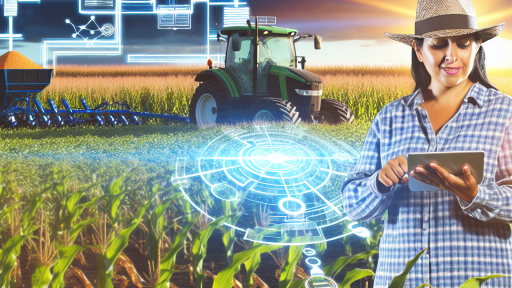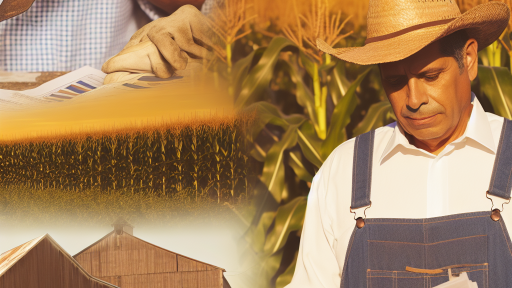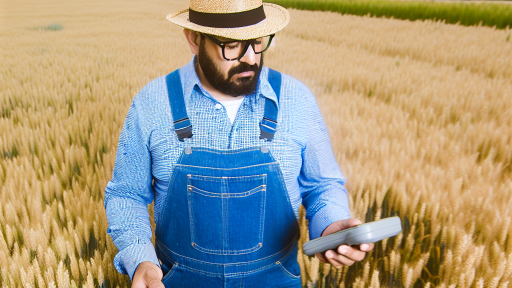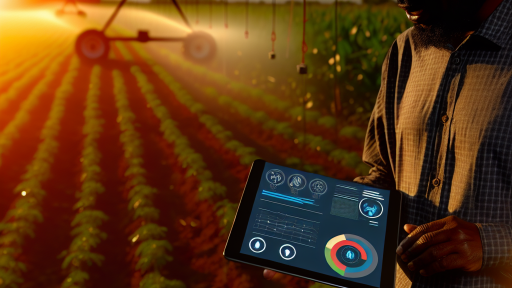Introduction to IoT in Agriculture
Importance of IoT in Livestock Management
The integration of Internet of Things (IoT) technology revolutionizes livestock management.
Farmers now utilize connected devices for real-time monitoring.
This innovation enhances efficiency in animal care.
Moreover, it allows for precise data collection and analysis.
IoT applications can predict health issues before they escalate.
As a result, farmers can make informed decisions based on data insights.
This proactive approach improves overall herd health.
Furthermore, it reduces the costs associated with veterinary care.
Benefits of IoT Solutions
IoT solutions offer numerous benefits for livestock management.
First, they provide enhanced tracking of individual animals.
This tracking includes monitoring location, temperature, and heart rate.
Second, data analytics help optimize feeding schedules.
The right nutrition improves growth rates and productivity.
Next, IoT devices allow for the automation of farm operations.
Automation streamlines tasks and reduces human labor requirements.
Transform Your Agribusiness
Unlock your farm's potential with expert advice tailored to your needs. Get actionable steps that drive real results.
Get StartedAdditionally, IoT helps monitor environmental conditions in real-time.
This feature ensures that livestock remain within optimal living conditions.
Consequently, farmers can increase productivity and reduce waste.
Case Studies and Real-World Applications
Real-world applications highlight the effectiveness of IoT in livestock management.
For instance, GreenField Farms implemented smart collars for their cattle.
These collars track health metrics and location accurately.
The results showed significant improvements in herd health.
Another example is AgriTech Innovations using sensors to monitor feed consumption.
This method helped reduce feed waste by 20%.
Moreover, farmers gained insights into the feeding patterns of their livestock.
These case studies exemplify the transformative power of IoT solutions.
Overview of IoT Technologies Used in Livestock Monitoring
Sensors in Livestock Management
Sensors play a crucial role in livestock management.
They collect real-time data on various parameters.
These parameters include temperature, humidity, and animal movement.
Through effective monitoring, farmers can ensure animal comfort.
Moreover, sensors help in identifying health issues early.
For instance, temperature sensors alert farmers to fever in cattle.
This proactive approach minimizes losses and enhances productivity.
Wearable Devices for Livestock
Wearable devices have revolutionized livestock management.
These devices track the health and activity levels of animals.
They often utilize GPS technology for location tracking.
As a result, farmers can monitor grazing patterns efficiently.
Additionally, wearables help in assessing the physical condition of livestock.
For example, smart collars can monitor heart rates and activity levels.
Showcase Your Farming Business
Publish your professional farming services profile on our blog for a one-time fee of $200 and reach a dedicated audience of farmers and agribusiness owners.
Publish Your ProfileThis data helps farmers make informed decisions for animal welfare.
RFID Technology in Livestock Tracking
Radio Frequency Identification (RFID) technology simplifies livestock tracking.
RFID tags are linked to individual animals for easy identification.
Farmers can scan these tags to access vital information.
This information includes breeding history and vaccination records.
Consequently, farmers streamline their management processes.
Furthermore, RFID technology improves biosecurity measures.
By tracking animal movements, farmers reduce the risk of disease spread.
Integration of IoT Technologies
The integration of these technologies creates a comprehensive monitoring system.
Farmers gain insights into their operations like never before.
This integration enhances decision-making capabilities significantly.
Moreover, it motivates farmers to adopt data-driven practices.
As a result, they can improve both efficiency and profitability.
IoT technologies play an essential role in modern livestock management.
Case Studies: Successful Implementation of IoT Solutions in Livestock Farms
Smart Sensors in Dairy Farming
Green Valley Dairy implemented smart sensors throughout their farm.
These sensors monitor cow health and environmental conditions.
They track temperature, humidity, and cow activity levels.
This information helps farmers make informed decisions.
As a result, the farm increased milk production by 15% last year.
Wearable Technology for Livestock
FarmTech Innovations introduced wearable devices for cattle.
The devices provide real-time location tracking and health monitoring.
Farmers receive alerts about potential health issues instantly.
This proactive approach reduces disease spread and improves herd health.
Consequently, the farm reported a 20% decrease in veterinary costs.
Automated Feeding Systems
Sunny Acres Ranch adopted an automated feeding system.
This system ensures livestock receive the proper nutrition consistently.
It automatically adjusts feeding based on individual animal needs.
This innovation has decreased feed waste significantly.
Farmers noted substantial savings in feed costs over six months.
Case Study: Riverbend Farms
Riverbend Farms integrated IoT solutions across its facilities.
The farm utilized monitoring tools for soil moisture and livestock health.
Technology allowed for precise irrigation and feeding schedules.
Consequently, yields improved by 25% within the first season.
Additionally, the farm achieved better resource management overall.
Real-time Data Analytics
Data analytics play a critical role in IoT for livestock management.
Farmers analyze real-time data to adjust strategies quickly.
This capability enhances their ability to respond to challenges.
For example, sudden weather changes can be addressed immediately.
Thus, farmers maintain productivity and ensure animal welfare.
Uncover the Details: Cloud-Based Farm Management Software Benefits For Farmers
Showcase Your Farming Business
Publish your professional farming services profile on our blog for a one-time fee of $200 and reach a dedicated audience of farmers and agribusiness owners.
Publish Your ProfileData Analytics and Insights
Enhancing Livestock Monitoring
IoT technology significantly improves livestock monitoring practices.
It provides real-time data about animal health and behavior.
Farmers can use this information to detect issues early.
Moreover, tracking animal movements supports overall herd management.
Improving Feed Efficiency
Data analytics helps optimize feeding strategies.
IoT devices monitor nutrition levels and eating habits.
Farmers can adjust feed formulas based on this data.
This approach leads to better weight gain and reduced waste.
Predictive Analytics for Health Management
IoT solutions enable predictive health analytics.
These tools analyze historical health data to identify trends.
Farmers can anticipate disease outbreaks before they occur.
This proactive strategy enhances herd wellness and reduces costs.
Data-Driven Decision Making
Access to comprehensive data improves operational decisions.
Farmers can compare performance metrics across different herds.
This analysis reveals best practices and growth opportunities.
Consequently, informed choices lead to enhanced profitability.
Integration with Other Farming Systems
IoT solutions can integrate with existing farming management systems.
This connectivity fosters a holistic view of farm operations.
Farmers can streamline workflows and reduce data silos.
Ultimately, it enhances efficiency across all farming activities.
See Related Content: Integrating Drone Technology For Effective Crop Disease Surveillance
Challenges and Barriers to IoT Integration in Livestock Management
Cost Implications
Implementing IoT solutions incurs significant costs for farmers.
Initial investment in technology can be a barrier.
Many small-scale farmers struggle with financial constraints.
Subscription fees for IoT services also add to the expense.
Thus, cost management becomes crucial for successful adoption.
Connectivity Issues
Reliable connectivity remains a significant challenge in rural areas.
Farmers often face slow internet speeds and unreliable networks.
This hinders real-time data transmission from IoT devices.
Moreover, geographic barriers can limit access to necessary technology.
Consequently, a lack of connectivity hampers effective monitoring.
Complexity of Integration
Integrating IoT solutions can be complex for livestock managers.
Understanding the technology requires specific technical skills.
Many farmers may not have the knowledge to maximize these tools.
The integration process may disrupt existing workflows.
As a result, training and support become essential components.
Data Management Challenges
Data generated by IoT devices can quickly become overwhelming.
Farmers need effective strategies to analyze and utilize this data.
Without proper data management, insights remain unleveraged.
Consequently, decision-making processes may not improve.
Showcase Your Farming Business
Publish your professional farming services profile on our blog for a one-time fee of $200 and reach a dedicated audience of farmers and agribusiness owners.
Publish Your ProfileSome farmers may hesitate to invest in data-centric solutions.
Regulatory Compliance
Navigating regulatory frameworks poses another challenge.
Farmers must ensure compliance with various agricultural regulations.
Data privacy laws also affect how IoT data is handled.
Especially, meeting these requirements can be time-consuming.
Farmers need to stay informed about changing regulations.
You Might Also Like: Climate-Smart Agriculture Tools Mitigating Environmental Impact
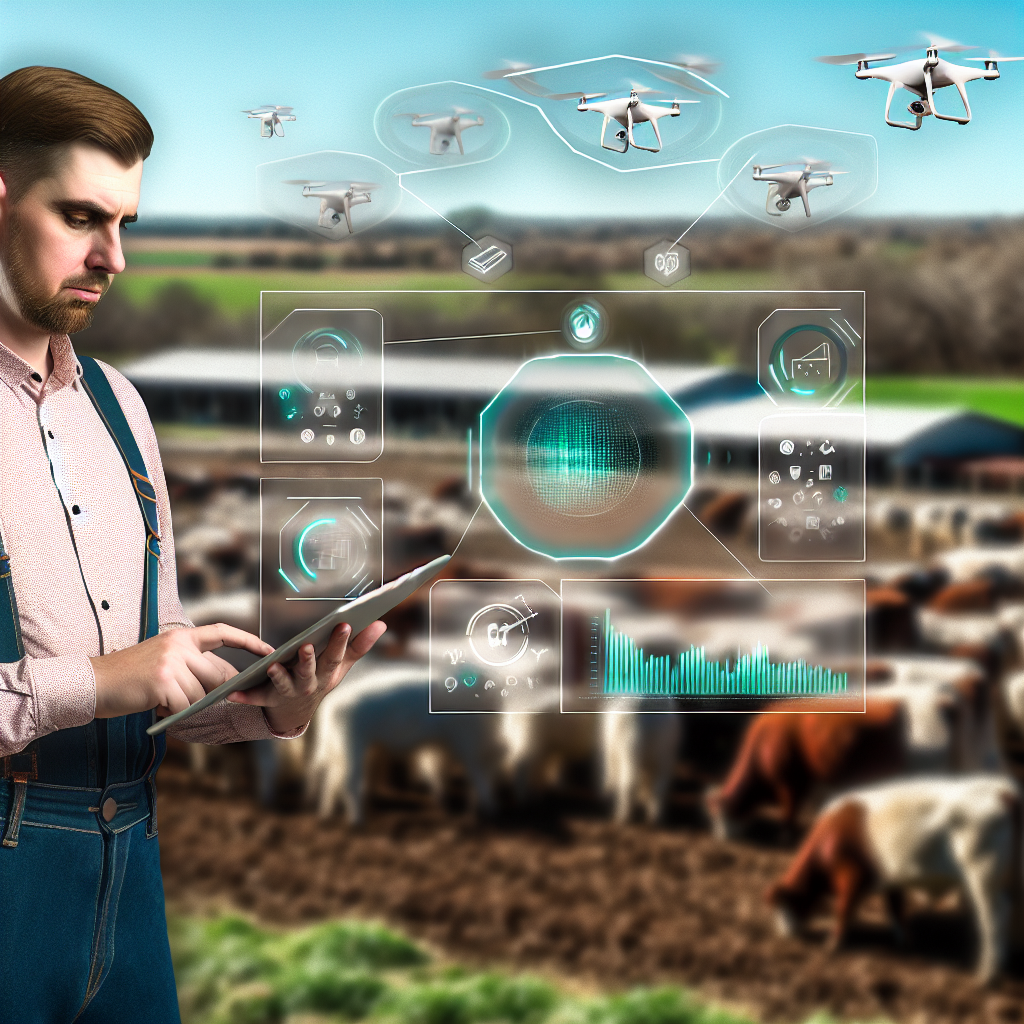
Future Trends: Innovations in IoT for Sustainable Livestock Farming
Introduction to IoT in Livestock Management
The Internet of Things (IoT) transforms livestock management significantly.
Farmers use connected devices to monitor and manage their herds efficiently.
Innovative technologies enhance animal welfare and farm productivity.
Precision Livestock Farming
Precision livestock farming uses IoT devices for data-driven decisions.
This approach optimizes resource usage while maximizing animal health.
Sensors monitor individual animal behavior and health metrics comprehensively.
For instance, GPS collars track livestock movement and pasture usage.
Remote Monitoring and Management
Remote monitoring allows farmers to manage livestock from anywhere.
Connected cameras and sensors provide real-time data on animal conditions.
This capability reduces the need for constant physical presence on farms.
Farmers can quickly respond to issues, improving overall efficiency.
Health and Wellness Innovations
IoT technologies ensure better health management for livestock.
Wearable devices track vital signs and detect potential health issues.
Real-time alerts help farmers address problems before they escalate.
This proactive approach reduces medication costs and enhances animal welfare.
Data Analytics and Decision-Making
Data analytics plays a critical role in livestock farming.
Farmers analyze trends from the collected data to inform decisions.
Predictive analytics forecast potential health outbreaks or feed shortages.
This insight allows for more strategic planning and resource allocation.
Sustainable Resource Management
IoT technologies enhance resource management for sustainable farming.
Automatic feeders and waterers minimize waste and ensure efficiency.
Smart irrigation systems optimize water usage based on livestock needs.
This approach reduces the overall environmental impact of farming.
Future of IoT in Livestock Farming
The future of IoT in livestock farming looks promising and transformative.
As technology advances, integration will become more seamless and efficient.
Farmers will increasingly rely on data to manage operations effectively.
Ultimately, IoT solutions will lead to a more sustainable and productive livestock industry.
See Related Content: Maximizing Yield With Advanced Agricultural Drones
Best Practices for Implementing IoT Solutions in Livestock Operations
Assessing Needs and Objectives
Begin by assessing your specific needs and objectives.
Identify the key areas where IoT can enhance your operations.
This may include tracking animal health, optimizing feed usage, or improving breeding practices.
Moreover, involve all stakeholders in this assessment process.
Gather input from farm managers, veterinarians, and field workers.
Showcase Your Farming Business
Publish your professional farming services profile on our blog for a one-time fee of $200 and reach a dedicated audience of farmers and agribusiness owners.
Publish Your ProfileChoosing the Right Technology
Select technology that aligns with your operational goals.
Consider various IoT devices like sensors and tracking collars.
Evaluate options based on cost, reliability, and compatibility.
Additionally, ensure the technology can scale with your operations.
For example, if you expand your herd, upgrade your system easily.
Data Management and Security
Establish a robust data management strategy.
Ensure data collection adheres to industry regulations and privacy standards.
Implement secure frameworks to protect sensitive information.
Regularly back up collected data to prevent loss.
Furthermore, educate staff about data security practices.
Training and Support
Provide comprehensive training for your team on IoT tools.
Ensure everyone understands how to use the technology effectively.
Offer ongoing support to address questions and troubleshoot issues.
Additionally, share success stories to motivate and engage employees.
Monitoring and Evaluation
Continuously monitor the performance of IoT solutions.
Evaluate their impact on livestock productivity and health.
Use data analytics to identify trends and areas for improvement.
Regularly assess whether your solutions still meet operational needs.
If needed, make adjustments based on feedback and results.
Regulatory Considerations: Compliance and Data Privacy in IoT for Agriculture
Compliance with Agricultural Regulations
IoT solutions in agriculture must adhere to local regulations.
Farmers must stay informed about these evolving regulatory frameworks.
Compliance ensures safe food production and environmental protection.
Key areas of focus include livestock health monitoring and data usage.
Organizations like the USDA provide guidelines on these matters.
Importance of Data Privacy
Data privacy is crucial in IoT applications for livestock management.
Farmers collect sensitive information that must be protected.
Unauthorized access can lead to misuse of data, impacting farmers’ operations.
Regulations like GDPR provide a framework for data handling practices.
Ensuring data privacy fosters trust between farmers and technology providers.
Best Practices for Compliance and Privacy
Implementing best practices facilitates regulatory compliance and data security.
- Regularly review and update data protection policies.
- Conduct training for staff on data handling procedures.
- Utilize secure IoT devices with strong encryption standards.
- Establish protocols for data breach response.
These steps help mitigate risks associated with IoT deployments.
Engaging with Regulatory Bodies
Farmers should engage with regulatory bodies to stay updated.
Participating in discussions helps influence future agricultural policies.
Collaboration between technology providers and regulators enhances understanding.
This partnership can lead to beneficial regulations for IoT in agriculture.
Ultimately, proactive engagement helps navigate compliance challenges.

